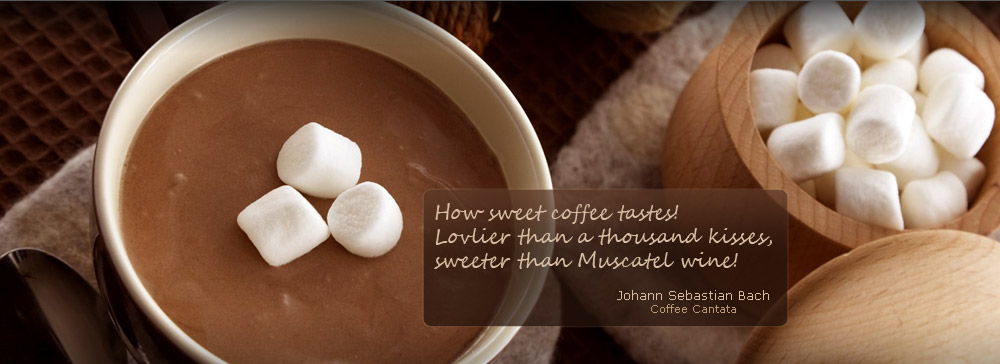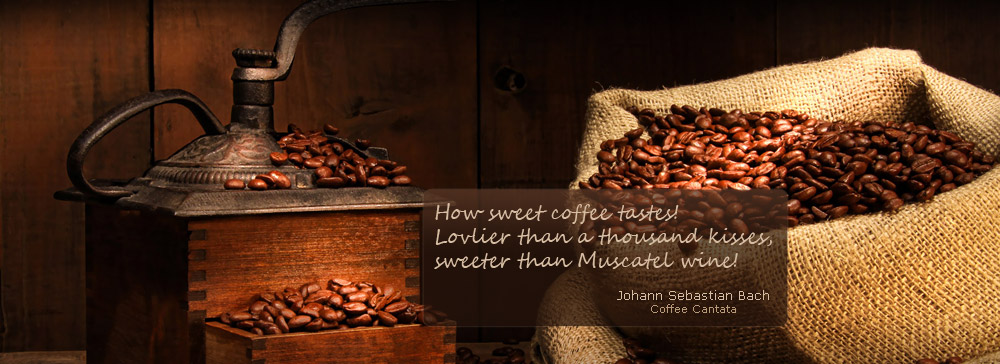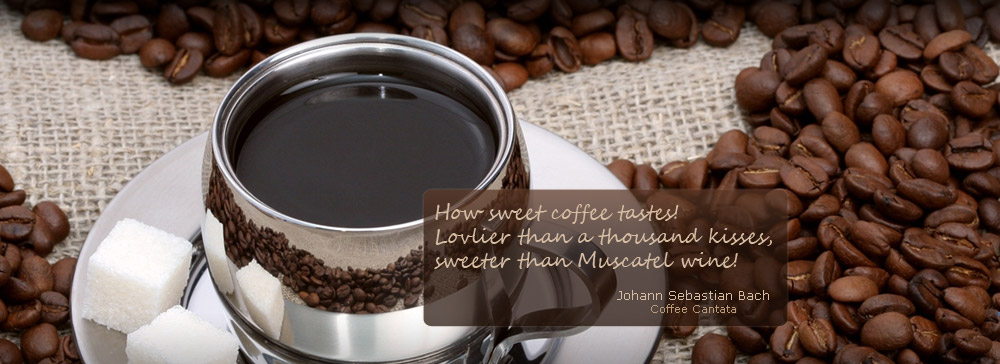| Áúëãàðñêè |

CURIOUS FACTS - history of coffee
 |
The Legend of Coffee: History of amazing drinkThere are many legends associated with coffee. And now experts don’t have consensus about the origin of the name. Some believe that the "coffee" comes from the Arabic "kaue" – meaning: force, energy. Others associate the name with South Ethiopian Province called Kaffa, where even today there are Arabic coffee forests preserved. The story of the discovery of coffee, a favorite drink of all mankind is lost in the ages. There are a number of differing stories as to the origin of coffee and how it was discovered. One story is that of an exiled Arab Sheik who saved himself from starvation by making a soup from the berries of the coffee shrub. The most common is, however, that of Kaldi the goatherd or shepherd who, in around 600-800 AD, was tending to his animals on the mountainside one night in Eastern Africa, most likely modern day Ethiopia, when he noticed that they were acting strangely. On investigating this he realised that they had been eating the cherry-red berries of a nearby shrub. As a result of this they remained awake, jumping and leaping around the whole night - even the older goats. Curious, the goat herder picked some and tasted them himself. He found that they invigorated him and made him more wide awake. It was about this time that a monk called Chadely or Scyadly from a nearby monastery was passing. The goatherd told him about the goats and he demanded to be shown this plant. Kaldi showed the monk a pretty little shrub with a greyish bark and brilliant foliage, the slender branches of which, at the base of their leaves, had bunches of small white flowers mingles with clusters of small berries, some green, riper ones a clear yellow colour and yet others, which had reached complete maturity, of the size, shape and colour of a cherry. It was the coffee shrub. The monk, wishing to try the effects of these berries, crushed a few into a powder and poured boiling water over them to make a drink. This was the first cup of coffee - it was not until much later, however, that coffee was first roasted. íà ìîëèòâà.Impressed with the results of the drink in making him wider awake and yet not affecting his intellectual capabilities, the monk took the new discovery back to his monastery realising that it would help him and his fellow monks stay awake during their long hours of prayer. Coffee soon spread from monastery to monastery and, therefore, became in much demand with devout Muslims, believing it to be a divine gift brought by an angel from heaven to the faithful. And so coffee had been discovered. In the centuries that followed, the people of this land absorbed coffee into their culture and daily routine. It was not, however, until later that coffee was discovered by the outside world. |
 |
Coffee's Journey Around the WorldCoffee Leaves Africa Coffee Arrives in Europe Coffee Travels to America Coffee in the 21st Century |
 |
ARABICA and ROBUSTA – Which bean is right for you?It’s the age old battle of the caffeine freak – what’s the better bean, the classier, subtler, harder to grow Arabica, or the hardy, beefy, robust Robusta bean? The answer, generally, is considered to be Arabica, the same way that famous film connoisseur of fine wine, Miles from Sideways, will steer clear of a Merlot in favor of a Chateau Cheval Blanc. But here’s the thing – the Chateua Cheval Blanc that Miles so adores is actually a blend of Merlot and another wine he slams in the movie – Cabernet Franc. And that’s what makes the Arabica vs Robusta question so hard to really conclusively answer - some of the best coffee around has a little of each. Arabica is grown high up in the mountains, and it requires a lot of tender loving care to keep it happy. That, of course, makes it more expensive to grow, and thus drink. To keep prices down, your friendly neighborhood corporate coffeehouse will add the cheaper, hardier, easier to grow, Robusta beans to their blend, kind of the same way a cocaine dealer might throw a little baking soda into his stash to bring about a better profit. You’ll still get a buzz, but it won’t quite be as pure as it might have been, if you know what I mean (and no, you should never use cocaine, but you see the point I’m trying to make here). Ultimately, unless you’re , you probably don’t need to know much about Arabica and Robusta, other than to know they exist. The Arabica, with twice as many chromosomes as the Robusta, has great complexity to it, which makes it a great home choice, but the Robusta is really the bean that has made low-cost coffee drinking possible. If you can take its slightly more bitter taste (and many prefer it), it’s a great inexpensive option. |
2011 © CoffeBase Ltd. All rights reserved. Web design by SP Vision Ltd.




